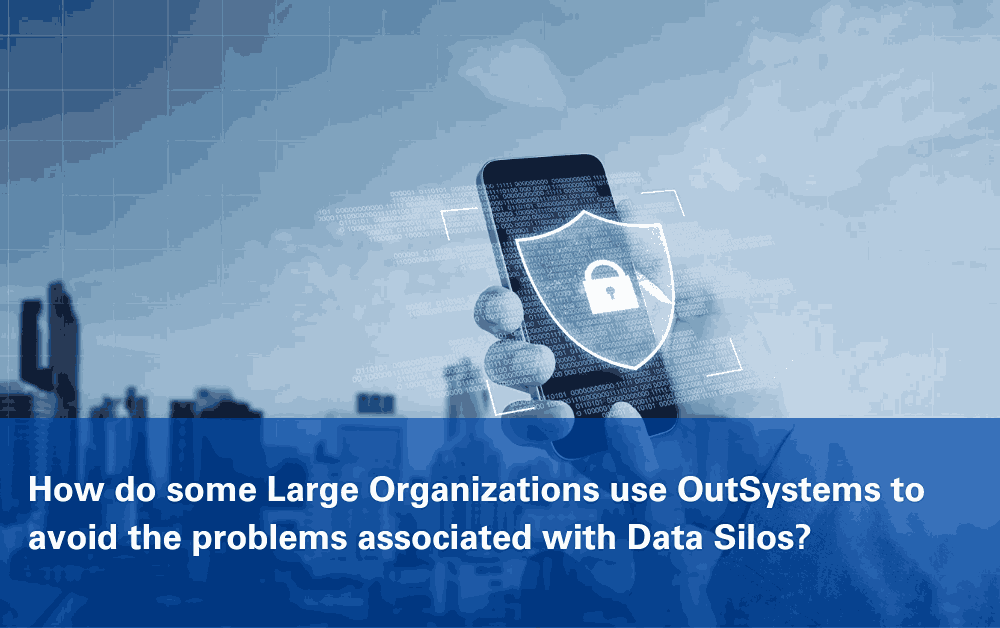Data is a critical asset for organizations, but it often remains locked in silos, isolated and underutilized. This categorization not only stifles collaboration and strategic decision-making but also leads to increased costs and missed opportunities for innovation. Recognizing the challenges posed by data silos, many large organizations are turning to modern solutions like OutSystems to break down these barriers.
OutSystems, a leader in low-code development, offers robust capabilities for creating data lakes that integrate diverse data sources into a cohesive and accessible repository. This blog post will explore how OutSystems can be leveraged to combat the pitfalls of data silos, enhance analytics and business intelligence, and provide strategic steps for building an effective data lake, thus ensuring organizations can fully capitalize on their data assets.
The Business Costs of Isolated Data
The consequence of maintaining data in silos extend beyond operational inefficiencies. They can lead to a lack of transparency, making it difficult to trace data lineage and ensure compliance with regulations. Additionally, data silos often result in duplication of efforts and resources, as different teams may unknowingly work on similar data tasks independently. This not only increases IT expenditures but also diverts valuable resources from strategic initiatives to routine data maintenance.
Building a Data Lake with OutSystems
One effective solution to dismantle data silos is the creation of a data lake utilizing a platform like OutSystems. A data lake allows organizations to store all their structured and unstructured data in a centralized repository, where it can be accessed and analyzed collectively. With OutSystems, building a data lake becomes feasible and efficient due to its seamless integration capabilities and low-code development environment. This empowers IT teams to rapidly deploy data solutions that consolidate disparate data sources into a unified system, enhancing data visibility and accessibility.
Enhanced Analytics and Business Intelligence
With data integrated into a single fabric, OutSystems enables enhanced analytics and business intelligence. Decision-makers can leverage real-time insights generated from comprehensive data analyses, leading to more informed decision-making and strategic planning. This capability is crucial for maintaining competitive advantage and adapting to market changes swiftly.
The Danger of Data Silos in a Dynamic Market
- Inefficiency and Redundancy: Data silos often lead to repeated efforts across departments, wasting time and resources.
- Impaired Decision Making: Limited data access restricts the organization’s ability to make informed decisions quickly.
- Compliance Risks: Disparate data systems can lead to compliance failures due to inconsistent data handling and privacy practices.
Strategic Steps to Build a Data Lake Using OutSystems
Step 1: Define Your Data Requirements
- Identify and catalog data sources across the organization.
- Establish the types of data processing needed (batch vs. real-time).
Step 2: Design the Data Lake Architecture
- Choose a scalable storage solution compatible with OutSystems.
- Design data ingestion workflows to ensure continuous data updates.
Step 3: Implement Data Lake with OutSystems
- Utilize OutSystems’ integration capabilities to connect disparate data sources.
- Employ low-code platforms for rapid development and deployment of data interfaces.
Deploying Robust Governance with OutSystems
- Data Quality Assurance: Implement automatic data validation rules within OutSystems to ensure high data quality.
- Security and Compliance: Configure role-based access controls and audit trails to enhance data security.
- Lifecycle Management: Develop policies for data retention and archival to manage the data lifecycle efficiently.
For large organizations battling with data silos, OutSystems offers a powerful solution that not only integrates disparate data sources but also fosters a culture of collaboration and transparency. By leveraging the platform’s capabilities, organizations can streamline their operations, enhance decision-making, and maintain a competitive edge in their respective industries. As the digital economy continues to evolve, the ability to quickly adapt and manage data cohesively will be crucial, making tools like OutSystems essential for future-ready enterprises.
Discover how Data Fabric can transform your organization by seamlessly integrating your data sources, boosting efficiency, and enabling smarter decision-making. Don’t miss out on harnessing the full potential of your data. Get your free copy of our comprehensive guide on Data Fabric solutions today and start your journey towards a truly integrated data environment!







